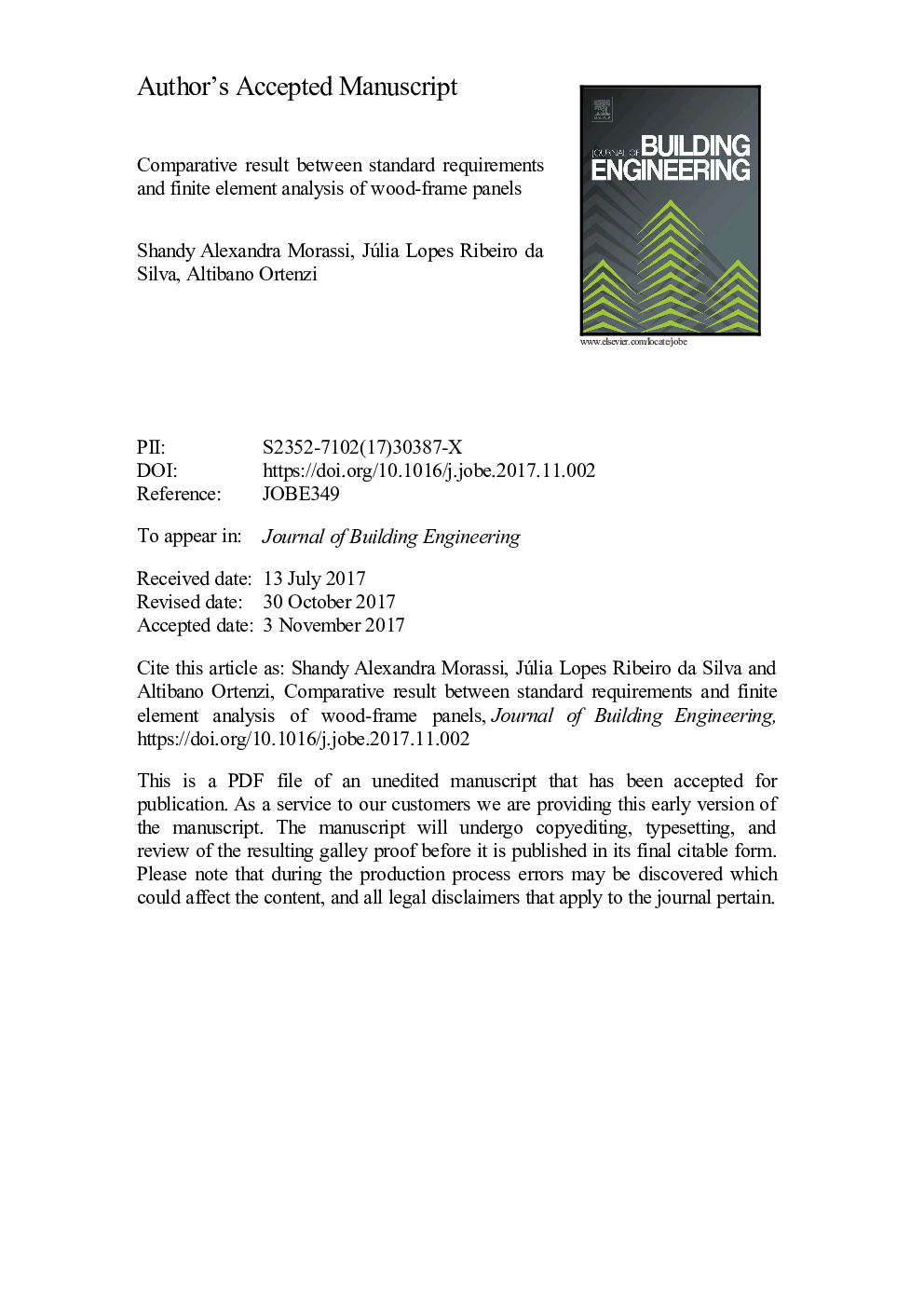| Article ID | Journal | Published Year | Pages | File Type |
|---|---|---|---|---|
| 6750040 | Journal of Building Engineering | 2018 | 18 Pages |
Abstract
This study uses finite element analysis to compare the performance of load-bearing wooden-frame panels in terms of connection displacements caused by lateral loads resulting from soft-body impacts and wall's parallel load resulting from suspended objects. The panels were designed based on the project concepts of the Design for Sustainability and the Design for Reuse. Connections play an important role in the design of the panels as they support and transmit loads to contiguous panels without collapsing. We designed two panels and connected them using an aluminum alloy (H-shaped cross-section, 2.0-mm thickness). An instantaneous impact energy load was replaced by an instantaneous equivalent load. Afterwards, the simulation was repeated for long-term loading during 24-h to verify the creep effect. The results obtained showed that all the simulations performed herein meet the standard prerequisites and the wall thickness could be less than used in this analysis. Yet, for constructive facilities and thermal and acoustic behavior, the thickness remained unaltered to improve these properties, regarding other studies previously developed.
Keywords
Related Topics
Physical Sciences and Engineering
Engineering
Civil and Structural Engineering
Authors
Shandy Alexandra Morassi, Júlia Lopes Ribeiro da Silva, Altibano Ortenzi,
